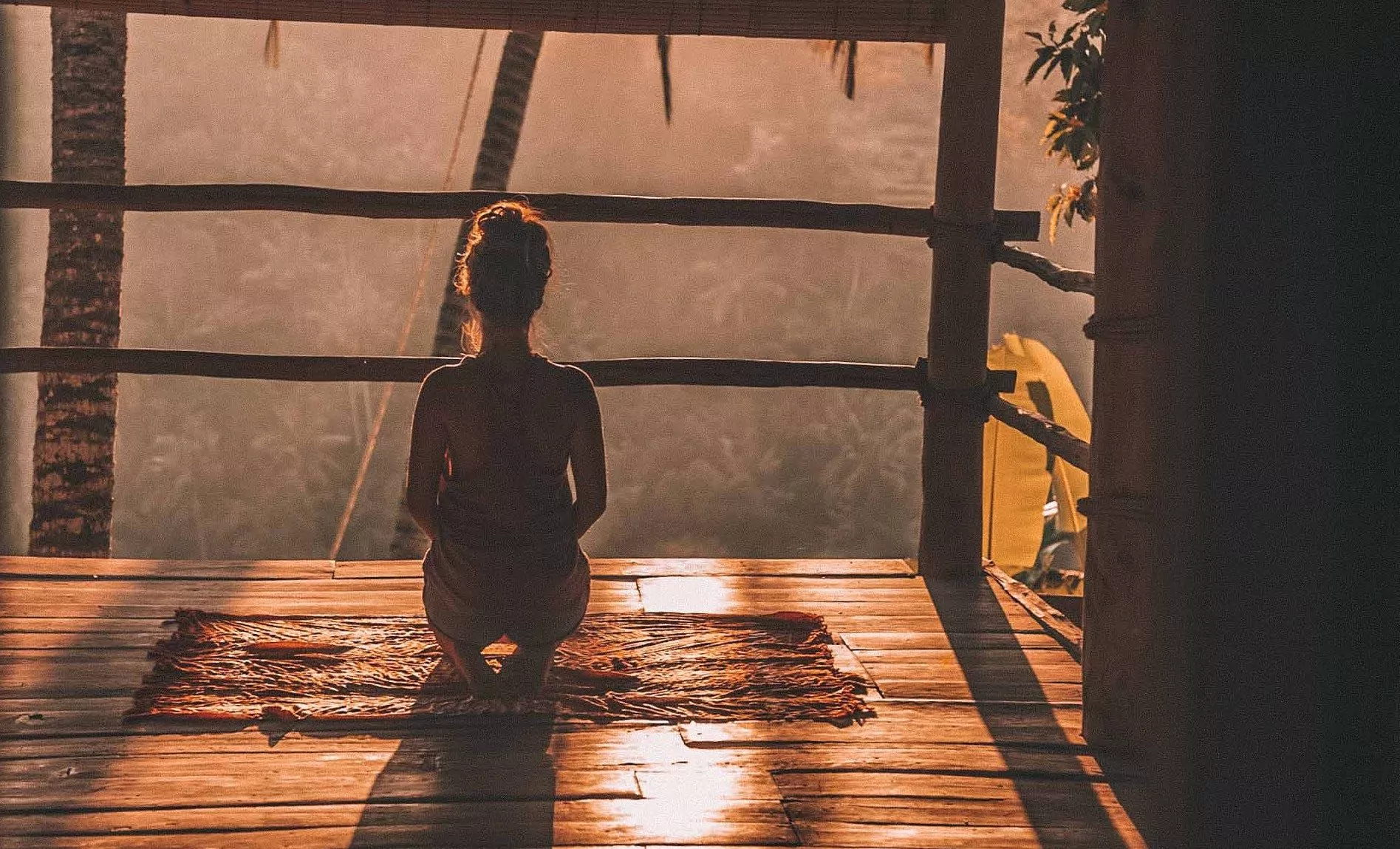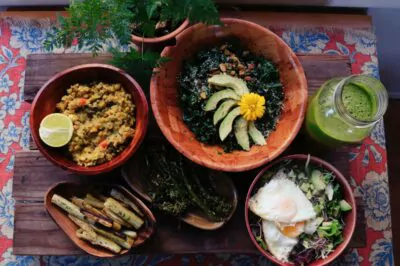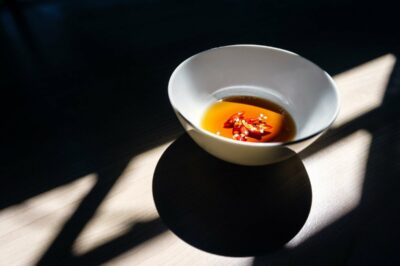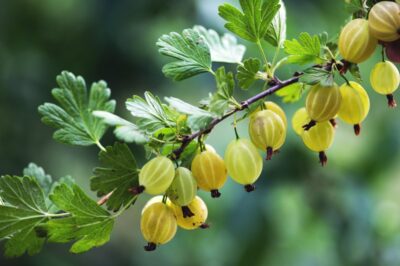Table of Contents[Hide][Show]
According to Ayurveda, a 5,000 year old holistic health system from India, ojas is the nourishing substance within us that provides the energy, vitality and joie de vivre that propels us through life.
What is ojas?
Said to be created from quality foods, good digestion, rest and rejuvenation, ojas itself is somewhat intangible—kind of like beauty—yet we have all experienced it!
We’ve seen it reflected back in the radiant glow that emanates from our relaxed faces after a restful vacation or a weekend offline. We’ve felt it in the energy we have after a few days of good sleep and a wholesome diet.
This type of radiance can seem elusive and out of our hands, but Ayurveda shows us how we can build ojas, inviting this brightness to radiate inside and out.
What is Ayurveda?
Translated from Sanskrit, Ayurveda means “the wisdom of life” or “the knowledge of longevity”. In accordance with this definition, Ayurveda views health as much more than the absence of disease.
Health, from this perspective, is the ability to maintain brightness and clarity in mind and body, especially the digestive system—the gatekeeper of good health.
The digestive system’s role
When the digestive system is able to break down nutrients from what you consume, nourishment (aka ojas) circulates throughout your physiology, feeding every cell, tissue and organ.
If your digestive fire, or agni, is weak, however, the digestive system is unable to create this subtle essence. This incomplete digestion creates a toxic by-product called ama. Everything you take in either becomes nourishing, radiance-promoting ojas or lingering, unwanted ama; the difference lies in the health of your agni.
This agni is the agent of all transformation. It provides the actual capacity to transform food into available nutrients as well as the ability to digest the mental, emotional and sensory experiences that fill day-to-day life.
A holistic health system
This may sound strange at first but as a holistic health system, Ayurveda teaches us that the mind and body are inextricably linked with a clear impact on one another.
Therefore, one’s ability to process, digest and assimilate contents of the mind is just as important as the ability to digest lunch—both can result ojas or ama.
Signs of poor digestion & ama :
- Dull, blotchy and uneven skin
- Heaviness or fatigue after meals
- Frequent gas, constipation, diarrhea or acid-reflux
- Low energy, depletion or mental fog
- Overwhelm, irritability or feeling burned out
Signs of healthy digestion & ojas :
- Luminous skin
- Sense of lightness and energy after meals
- Regular, healthy elimination
- Feeling present, clear and easeful
- Able to meet challenges with head on; resilience
Reaching inner (and outer!) radiance
To ensure that you’re supporting healthy agni and ojas, the precursor to inner and outer radiance, there is one Ayurvedic practice recommend above all others: rasayana, or Ayurvedic rejuvenation. Translated as “the path (āyana) of essence (rasa)”, rasayana is aimed at restoring the body’s vitality through rest, self care and a gentle diet.
As a therapeutic process it is concerned with the conservation, transformation and revitalization of energy so that mind-body has renewed capacity to digest life, both literally and figuratively.
There are many ways to experience rasayana but given the nature of our modern lifestyle—and the imbalances it creates— these two are my personal favorites:

Ayurvedic Self Care
Anoint Yourself Abhyanga is beloved Ayurvedic self care practice in which you anoint your body with warm oil, massaging your skin to soothe and rejuvenate. When applied, warm oil dissolves fat soluble toxins, nourishes the tissues, calms the nervous system and improves immunity, making this an integral part of an Ayurvedic lifestyle.
Other benefits include increased circulation, reduced anxiety, improved joint mobility & lubrication, increased mental alertness and stamina, regular elimination, deeper sleep — and radiant skin.
Fun fact about this self care practice: the Sanskrit word sneha means both “oil” and “love,” and as you’ll experience, the effects of abhyanga are similar to being saturated with love—that feeling of stability, warmth and comfort.
Steps:
- Warm about 1⁄4-1⁄2 cup of almond oil (grounding, nourishing)
- Use coconut or sunflower oil to cool and soothe, use mustard, sunflower or olive oil to stimulate and warm
- Sit or stand comfortably in a warm room on an old towel, or an old that you don’t mind ruining with oil accumulation.
- Massage the oil into your body, beginning at the extremities and working toward the middle of your body
- Use long strokes on your limbs and circular strokes on your joints
- Massage the abdomen and chest in broad, clockwise, circular motions
- Enjoy a warm bath or shower, washing your feet first so that you don’t slip but not excessively soaping off the rest of the oil
- The steam from the shower will open your pores, allowing the oil to penetrate deeper. Over time your skin will feel soft and hydrated with less need for lotion or additional oil post-shower
- Afterwards, nourish your face with a soothing oil (like Annmarie’s Herbal Facial Oil for Sensitive Skin!)
- Use lotion or body oil as needed.

Create a Sleep Ritual
People spend considerable effort in the morning preparing for the day ahead, but less thought is given to how and why it’s important to unwind after a full day.
A consistent evening routine can support your mind-body as it prepares for its night shift duties, and like your morning habits, support the body’s underlying daily rhythms. Evening routines also offer the perfect opportunity to experience deep rejuvenation each and every day.
Here are five tips to try out when creating a relaxing sleep ritual.
try out low lighting
Turn off overhead lights after dinner. Low lighting helps tell your body it is time to go to sleep, while bright lights confuses your circadian rhythms and natural hormones that pull you into the “sleepy feeling.” (Same goes for those screens!)
give yourself a massage
Give yourself a warm oil massage (abhyanga) to help the nervous system wind down. Add a soothing essential oil to your body oil to ensure peaceful sleep and a radiant glow.
drink something warm
Sip some warm milk to invite that sleepy feeling. Or use almond milk which is an excellent source of calcium which converts to make melatonin, the “sleep hormone”. To spice it up, try a blend like Elemental Alchemy’s Spiced Golden Milk which is packed with comforting, nourishing and healing spices that support detoxification and digestive health.
stick to an early bed time
Be in bed by ten. If you’re awake much later, the metabolic energy your body normally uses for nightly renewal is diverted to mental energy, and you get a “second wind” at the sacrifice of rejuvenation. If you currently go to bed at midnight, use the ten minute rule: Each night, try going to bed a mere 1o minutes earlier. Soon you’ll be snoozing by 10pm!
get into the right headspace
Instead of mental stimulation right before bed, read an uplifting novel or write a gratitude list.
You can also try this practice to facilitate mental digestion: Once in bed and lying down, mentally go backwards through your day in increments of 30 minutes or an hour. Try to register what was happening and what you were experiencing with childlike curiosity. Notice your feelings, relax and try to let go. End with the image of you woke up that morning. More than likely, you’ve already drifted off to sleep before you do!
About the Author
 Sachi Doctor is the founder of Elemental Alchemy, offering handcrafted Ayurvedic products and personalized wellness services to support those navigating their way towards vibrant health.
Sachi Doctor is the founder of Elemental Alchemy, offering handcrafted Ayurvedic products and personalized wellness services to support those navigating their way towards vibrant health.
She is an Ayurvedic practitioner, health educator and tea maker who blends Ayurvedic principles and yogic philosophy with physiology and functional nutrition to help individuals better understand their mind-body and to empower them to reclaim agency for their health.
Learn more about Sachi and explore her product line at www.elemental-alchemy.com and @elemental_alchemy on Instagram.








How do you build ojas? Share with us in the comments.